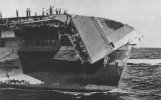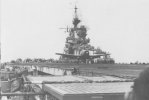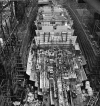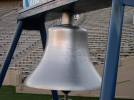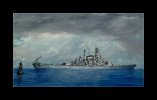USS Illinois (BB-65). Along with her sistership
USS Kentucky (BB-66), these were the last 2
Iowa class battleships that were laid down but never completed. Just as
Missouri and
Wisconsin had slight improvements over
Iowa and
New Jersey, the last 2 ships had further improvements to include an all-welded construction that would be save weight and increase the effectiveness of the armor by an estimated 5%.
After the war, there was a Nimitz Board improvement plan for the Iowas that included adding 6 ft torpedo blisters on each side for a beam of 120 ft., moving 2 of the twin 5"/38 calibre secondaries to superfiring positions over the main turrets, replacing the 20mm and 40mm with twin 3" automatic cannons, eliminating the conning tower and consolidating the twin stacks into a single stack.
For those interested in the multiple conversion projects proposed for the
Iowa class, I recommend Wayne Scarpaci's books that are on Amazon:
View attachment 29548
The keel of the fifth ship of the
Iowa class (BB-61 / 66), the
Illinois (BB-65), was laid down on 15 January 1945 at Philadelphia Navy Yard. By 7 July the construction had progressed this far and the ship was officially cancelled a month later, on 11 August 1945, only about 22 % complete.
View attachment 29550
While the
Illinois (BB-65) itself was never completed, her bell was cast. It currently resides at Memorial Stadium at the University of Illinois at Urbana-Champaign, and is rung by members of the ROTC after the Fighting Illini football team scores. It reads "
Illinois 1946".
View attachment 29549
Artist conception of the
Illinois after the Nimitz Board Improvement Plan.

